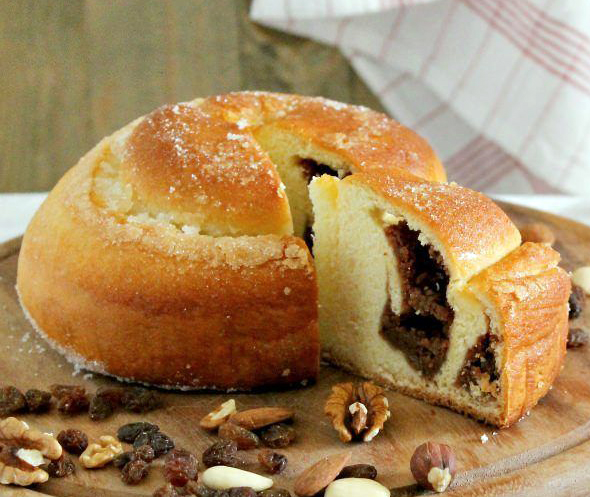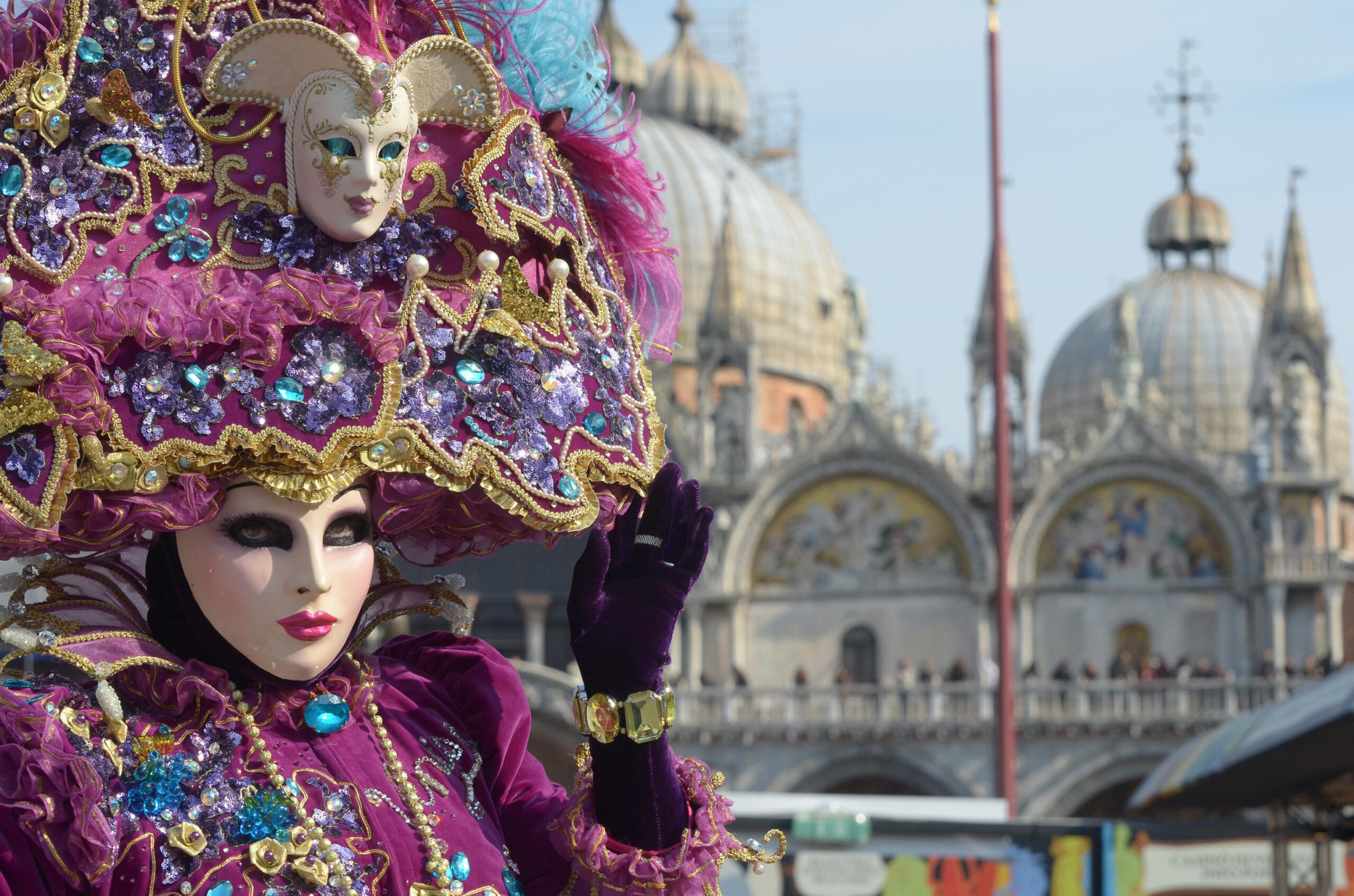In Italy bread is a symbol of life, so it is no surprise that pane is an essential part of Pasqua, the holiday that marks the resurrection of Christ. Italian Easter bread, or Pane di Pasqua, is often round, braided and dotted with colorful hard-boiled eggs. While most Easter breads take on this appeal, the breads, like most foods throughout Italy, vary from region to region.
Residents of northern Italy bake a special Easter bread called Gubana. Traditionally from the town of Cividale del Friuli in Friuli-Venezia Giulia, Gubana is a buttery dough filled with a mixture of nuts, raisins, apricot jam, candied orange peel, cocoa, Marsala wine, grappa and rum. The result is a dense, sweet bread with a swirl of rich filling, usually served for dessert.
In Liguria, the traditional Easter bread is Pasqualina, which consists of thin layers of unleavened dough made with flour and olive oil, stuffed with sautéed chard, spinach or artichokes, as well as various kinds of cheeses. In Bologna, their famous rice bread, made with rice cooked in milk, sugar, nuts, raisins and rum, is served as a celebratory cake for the holiday.
Pan di Ramerino originated in the Middle Ages, but the recipe has evolved over time. These large chewy rolls are flavored with rosemary and raisins and are the Pane di Pasqua of Florence. While this bread has become quite popular year round, in the past it was baked specifically on Holy Thursday.
The city of Naples boasts the famed La Pastiera Napoletana. This wheat-berry Easter cake, made with sweet and creamy custard, candied orange and lemon peels and served under a lattice-top pastry crust, is the ultimate Neapolitan Easter dessert.
The Italian islands of Sicily and Sardinia feature more unique Easter breads. Some of the most interesting are the Coccoi Cun S’ou from Sardinia and the Pupo con l’uova from Sicily. Eggs are encased in bread sculpted into various intricate designs. In Sicily, a hard-boiled egg is placed in the center of the bread and designed as an Easter basket around it. Sicilians also create “baby-doll” breads which are made for little girls, while breads shaped like ducks, lambs or even horses are given to boys.
The most traditional Easter bread baked throughout Italy is the Colomba Pasquale or Easter Dove. The bread was first made in the Lombardy region and its popularity spread throughout the country. Today it is often described as the national Pane di Pasqua of Italy.
There are several stories about Colomba Pasquale’s origins. One version dates the Colomba to 1176, when it was established to commemorate the Lombardian victory over Holy Roman Emperor Frederick Barbarossa. During the deciding battle, according to this version, two doves representing the Holy Ghost miraculously appeared on the battle standards.
Another legend dates the bread to 572, when King Alboin conquered Pavia after a three-year siege. To convince the King to free her city, a clever maiden set to work devising a sweet bread in the shape of a dove, a symbol of peace. She presented the bread to the King and he was so charmed that he spared Pavia from destruction and made it his capital.
Though there are many versions of the origin of the bread, the recipe remains consistent. Colomba Pasquale is flavored with diced candied orange and lemon rinds and decorated with sliced almonds and baked in a dove-shaped mold.
Taralli are crisp pepper and fennel-flavored Italian biscuits from Puglia. They are often served with wine at the beginning of a meal or as a snack. When making Taralli di Pasqua, or sweet taralli, the fennel and pepper is left out. Instead, the finished biscuits are dipped in a sugar frosting and often dressed with candy sprinkles.





